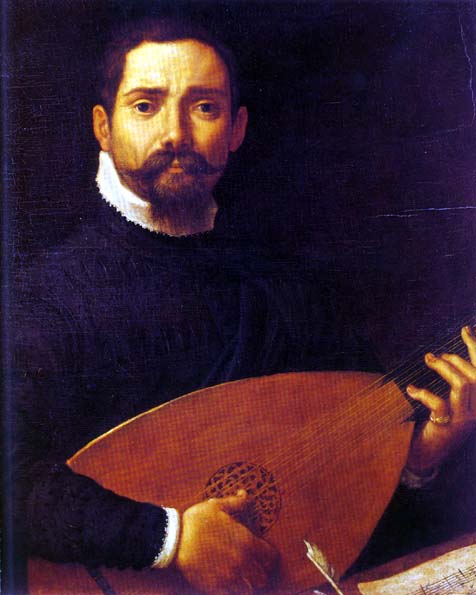

Composer. Nephew and pupil of
Andrea Gabrieli
. Court musician in Munich from 1575 or earlier until 1579, then
an organist at St. Mark's, Venice, from 1584 until his death.
After 1586 his duties included composition. His works are mostly
sacred or instrumental, except for a few madrigals and
canzonettas written in the 16th century.
Of his sacred vocal works all but the
earliest are for two or more choirs and reveal a penchant for
full, homophonic textures. Even in pieces from before 1600 some
parts, especially lower ones, seem to be conceived for
instruments, although none is explicitly so designated. His later
works show an interest in more modem techniques. Although
multiple performing groups are still called for, these tend to
differ in nature--choral, soloistic, or instrumental (now
frequently marked as such)--and in idiom. Organ (basso continuo)
or instrumental ensembles may accompany solo vocal lines. This
modernity is clear not only in his own works but also in pieces
composed by certain of his students, such as Heinrich
Schütz.
Among the sacred compositions of Giovanni
Gabrieli are a Kyrie, Gloria, Sanctus, and Benedictus, all
included in a print of 1597 and presumably belonging to a single
Mass. The lower parts of the Kyrie
à 5
appear to be instrumental, the highest for a vocal soloist. This
part has
piano
and
forte
echo effects and coloratura writing that requires a virtuoso
performer. Another Benedictus--from Book II of the
Sacrae symphoniae
of 1615--is for three choirs
à 4,
consisting of TrebleSST, SATB, and TTTB. At the beginning, these
choirs twice follow each other in the order lowest-highest-middle
and then gradually build up to a resounding Osanna, in which all
twelve voices participate. However magnificent this Benedictus
may be, it is nevertheless true that Mass composition was of
secondary importance to Giovanni, as it was to most of his
Venetian contemporaries. The golden age of the polyphonic Mass,
indeed, was drawing to a close. In Giovanni's motets, however,
the Venetian style of polychoral composition attained its
culmination. Motets of his began to appear in the 1587 volume
representing him and
Andrea
jointly. "Giovanni Gabrieli is the musical Titian of Venice, as
Palestrina is the musical Raphael of Rome." With his
compositions, however, we have definitely crossed the border into
the domain of baroque music.
Purely instrumental music is unusually
prominent in Gabrieli's output. Of his many works for keyboard
solo, the ricercars are the most distinguished. More important,
however, are the ensemble pieces, commonly named canzonas or
sonatas. The majority of these are for multiple "choirs," with
some florid voices for particular instruments, especially violins
and cornets.
Relatively little of Gabrieli's work was
published during his lifetime. The most substantial collection by
far is his
Sacrae symphoniae
of 1597, which contains both motets and instrumental pieces. Much
more came out shortly after his death, particularly the
Symphoniae sacrae ... fiber secundus
and the
Canzoni et sonate,
both of 1615. This music had little influence in Italy but
greatly affected musical developments in Germanic lands.